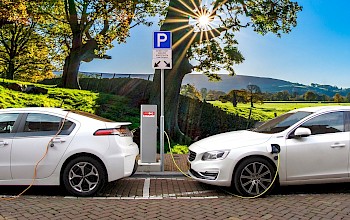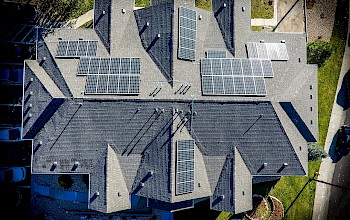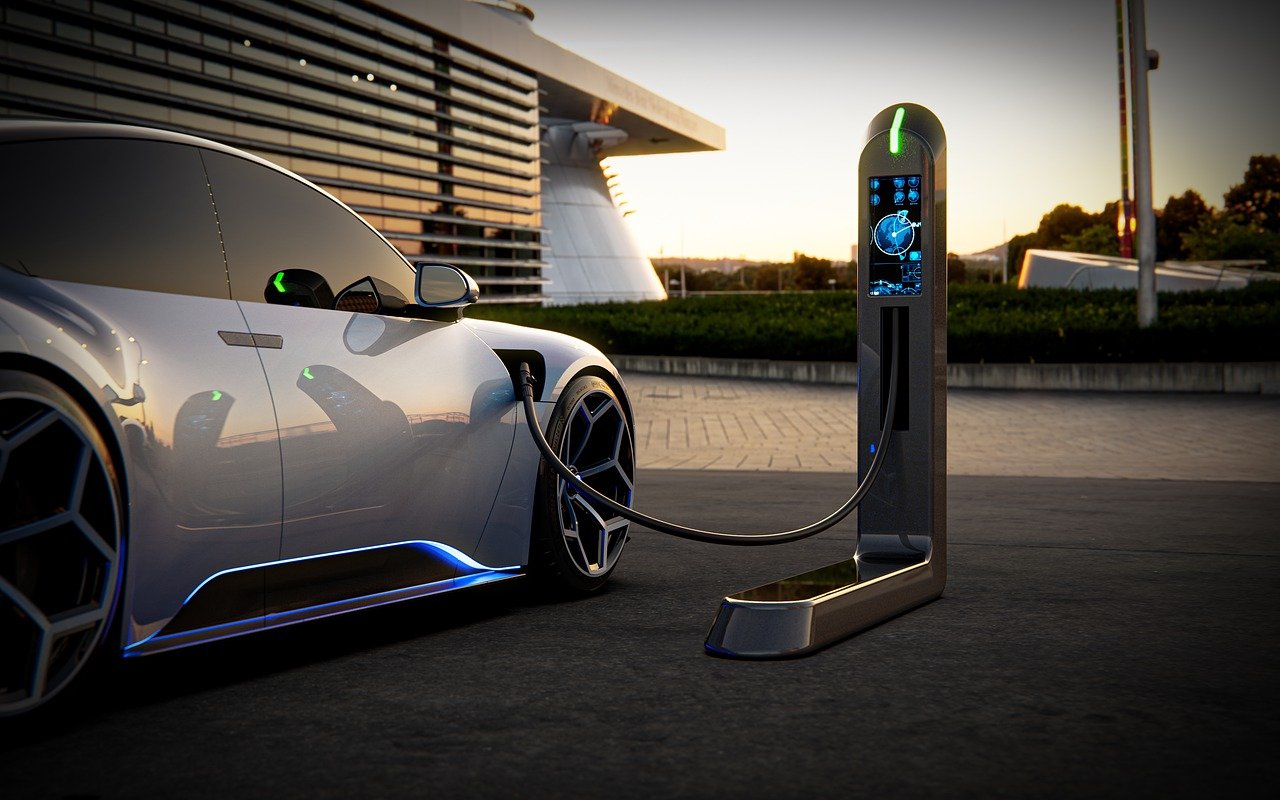"Democratising Car Ownership: The Evolution of Electric Vehicles and an Integrated Energy System" by Andy Mouat
15 February 2024
“Hi, I’m Andy Mouat and I live in Kilchrenan. As some of you will know, I work in the field of electric vehicles and am passionate about the move away from petrol and diesel for both sustainability and air quality reasons. However, I fully recognize the challenges this presents, particularly for rural communities like ours.
The automotive industry has undergone a remarkable transformation in recent years, with the evolution of electric vehicles (EVs) driving us (Warning: I’m not averse to a pun or two) towards a greener and more sustainable future. As cities embrace electric mobility, rural locations present a unique set of challenges for the widespread adoption of EVs. In this blog I have summarised the fascinating journey of electric vehicles, explore the obstacles they face in rural areas, and touch upon some of the innovation that could make communities like ours more resilient and self-sufficient.
I drive an EV for both personal and work-related journeys and I am a complete convert for a variety of reasons, they are more sustainable, they are extremely easy and fun to drive and, importantly given my bar tab, they’re cheaper to run (depending on your mileage).
For example, based on the currently electricity cap, we pay 28.6p/kWh or approximately 9.5p/mile. For those of us lucky enough to have a Smart Meter installed (speak to local resident Finlay McFee for an in-depth conversation on this matter!) you can benefit from much cheaper overnight costs of 3p per mile or less.
That means that for every 100 miles I travel, I’ve saved enough to afford one of Lindsay’s fancy Martinis on a Friday night."
The Evolution of Electric Vehicles
EVs are not a new thing. The concept of electric vehicles dates back to the early 19th century, when inventors like Robert Anderson and Thomas Davenport experimented with battery-powered transportation. However, it wasn't until the late 20th century that electric vehicles began to gain serious attention. The introduction of hybrid vehicles like the Toyota Prius paved the way for mainstream acceptance of electric drivetrains.
Although there were a number of models prior to this, the breakthrough moment arrived with the launch of the Tesla Roadster in 2008. This all-electric sports car demonstrated that electric vehicles could be high-performing and visually appealing, effectively dispelling the notion that EVs were merely sluggish, boxy machines. Subsequent developments in battery technology led to improved range, faster charging times, and more affordable options, bringing EVs within reach for a broader range of consumers.
The nature of EV technology has opened up opportunities to disrupt the status quo of the motor industry. One such example of a market disruptor is The Munro MK_1, an off-road, all-terrain electric vehicle designed to navigate the rugged landscapes of rural countryside locations. This is the first vehicle to be manufactured in Scotland since Peugeot closed its Linwood plant in 1981.
Equipped with cutting-edge battery technology, robust suspension systems, and adaptive traction control, the MK_1 aims to conquer the challenges posed by challenging topographies and inclement weather. This vehicle's arrival marks a significant step towards enabling rural residents to embrace electric mobility without compromising on performance or reliability.
However there remain some significant challenges to the wholesale adoption of EVs.
Pros and Cons
Unlike urban centres, rural areas often lack a well-established charging infrastructure and the available electricity network capacity to develop said amenity. EV charging stations are generally sparsely distributed, making it inconvenient for rural residents to access a reliable charging point.
Adding to this, the larger distances typically covered in rural areas can put a strain on the range capabilities of many EVs. This is exacerbated by the often more inclement weather and challenging topography our beautiful part of the country suffers from.
These factors can lead to "range anxiety", where drivers fear running out of battery power before reaching a charging station.
However, improvements in energy densities have meant that battery ranges are significantly better than even a 12 months ago, with most vehicles capable of at least 250 miles in one charge. Battery thermal regulation technology has also seen significant development meaning cold weather has less of an impact on range. And it’s worth remembering that regenerative braking technology helps to replenish the battery when travelling downhill.
 Publicly available charge points are being deployed at an ever-increasing rate and can literally be found the length and breadth of the country, including on our most remote Islands. There are now over 53,000 chargers across the UK, with over 16,000 of them having been installed in 2023 alone. This rate of deployment will only accelerate through 2024.
Publicly available charge points are being deployed at an ever-increasing rate and can literally be found the length and breadth of the country, including on our most remote Islands. There are now over 53,000 chargers across the UK, with over 16,000 of them having been installed in 2023 alone. This rate of deployment will only accelerate through 2024.
There’s much publicity about rates of charge with most people believing faster is better, however most vehicles spend the majority of their time idle, hence there’s ample time to charge whilst you visit the pub, play bridge or sleep (according to Google these are the three main activities of a Kilchrenian). No more stopping at the petrol station required. Even a standard 3-pin socket will deliver enough energy for 6 miles of range an hour. And a domestic charger will deliver circa 30 miles of range and can be installed without any need to upgrade the local grid or your home’s main fuse.
Rural areas may have limited access to EV dealerships and service centers. This scarcity can result in difficulties in purchasing, maintaining, and repairing electric vehicles, deterring potential buyers from making the switch.
However, EVs have around 20 moving parts in their motors and drivetrains compared to nearly 20,000 in an internal combustion engine (ICE) vehicle. Equally, consumption of consumables like oil and other lubricants is significant reduced. Brake discs will typically last twice as long on an EV due to the regenerative breaking of the motors. These and other factors mean that the maintenance burden of EV is far less.
A glimpse into the (near) future
As with most things in life, there are a variety of viewpoints on EVs. For me, EVs and their associated infrastructure offer an opportunity for the democratisation of energy systems.
They can disrupt our reliance on large corporations, especially large oil and gas companies, both at a national and local level. Thus we become less reliant on the importation of energy, and more resilient to geopolitical factors and the fractured and volatile markets they influence.
Another thing to consider when looking at EVs is that they cannot be directly compared with ICE vehicles. Similarly, they should not be considered in isolation from our electricity and heating systems.
EVs are the facilitators of an integrated and dynamic energy system, for example, combining solar photovoltaic (PV) panels and an EV charger allows you to generate energy from light, year-round (yes, even in Argyll), and charge your vehicle when you’re not consuming in your home.
Even more exciting, 2024 will see the introduction of domestic vehicle-to-home (V2H) or bi-directional chargers. This means that you can discharge your car’s battery and power your home, opening up a variety of possibilities. However, if I continue with the above scenario, you could charge your car from your PV array during the day and then run your home at night from your vehicle.
This maximises the utilisation of your assets, reduces your energy costs and reduces your reliance on the electrical grid. Good news for those who were affected by the recent blackouts.
Another exciting scenario to highlight relates back to my earlier reference to the cost of energy in relation to electric vehicles. Imagine running your home for less than 10p/kWh. Soon, you won’t have to.
Conclusion
The evolution of electric vehicles has been nothing short of remarkable, transforming the automotive industry and reshaping our perception of sustainable transportation. While urban areas have been quick to adopt EVs, rural countryside locations face a unique set of challenges that hinder widespread adoption. The lack of charging infrastructure, range limitations, challenging terrains, and limited availability of services are obstacles that must be overcome to make electric mobility a viable option in rural areas.
In the midst of these challenges, some of the innovations I discussed above demonstrate that creative engineering and a dedication to sustainability can yield solutions tailored to the specific needs of rural communities. As technology continues to advance and awareness of environmental concerns and fuel poverty grows, it is only a matter of time before these obstacles are surmounted, and electric vehicles become a common sight on the roads of even the most remote countryside locations.
I love discussing this subject so if you have any questions, just bring some beer.

